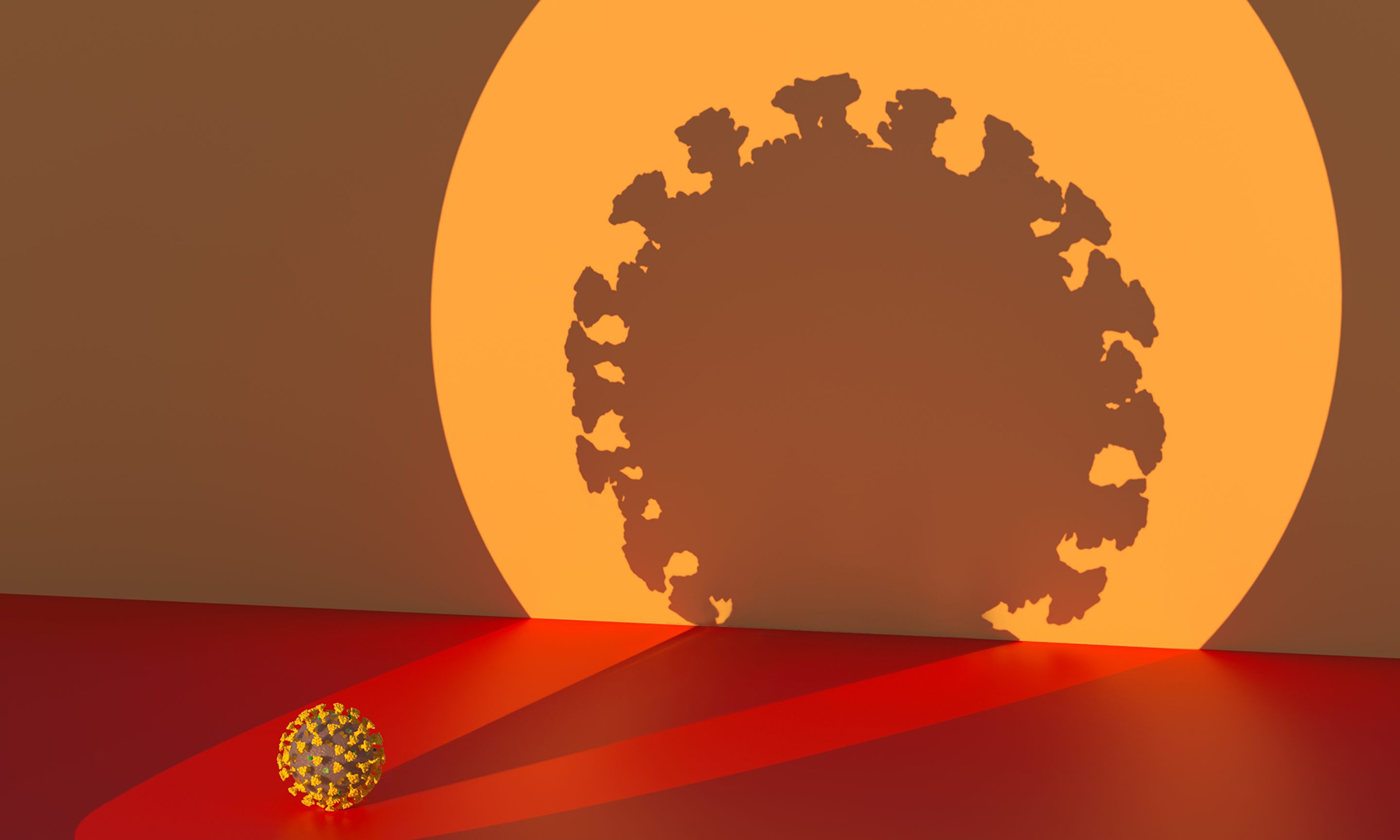新冠变异株JN.1症状简介:“Pirola”与其他奥密克戎毒株有何不同?

美国的新冠感染水平呈急剧上升趋势。人们可能怀疑今冬疾病到底是最新瘟疫还是完全不同的原因。
和往常一样,仅凭症状无法区分新冠与流感、呼吸道合胞病毒和其他常见的冬季疾病,例如鼻病毒、肠道病毒和副流感病毒。虽然全新高度变异的新冠病毒变种“Pirola”JN.1如今横行全球,准确区分仍然难度很大。更重要的是,存在同时感染两种或两种以上病毒的情况。
和往常一样,如果感染的是新冠病毒,在医疗机构或家中检测是最方便的确诊方式。出现病症应该咨询医疗机构,如果症状轻微且没有其他状况,具体病因可能无关紧要。
不过,随着新冠病毒新变种引起各方关注,人们想知道新冠病毒引发症状有没有改变,或者需不需要采取戴口罩等预防措施。以下是应对冬季疾病需要了解的信息。
JN.1症状与普通新冠症状是否不同?
尚无定论。据报道,腹泻病例呈上升趋势,可能与新冠有关也可能无关。与此同时,人们猜测病毒可能会滞留肠道,而不是像奥密克戎一样攻击上呼吸道,或是像最初的新冠病毒在下呼吸道肆虐。
专家建议留意胃肠道症状,要明确知晓胃肠不适可能是新冠症状而不仅仅是胃流感。不过正如约翰斯·霍普金斯健康安全中心(Johns Hopkins Center for Health Security)的高级学者阿梅什·阿达利亚指出,一直都有人因新冠出现胃肠道症状,包括恶心、呕吐和腹泻等。
此外,也要留意常见的新冠症状,可能包括:
• 发烧
• 寒战
• 咳嗽
• 呼吸急促/呼吸困难
• 疲倦
• 肌肉/身体疼痛
• 头痛
• 喉咙痛
• 充血/流鼻涕
JN.1会不会导致更严重的新冠病例?
同样未有定论。不过已知的是,在美国和其他地方新冠导致住院人数呈上升趋势,JN.1引发病例情况一样。
根据最新的联邦健康数据,截至12月16日,新冠导致美国住院人数每周增加10%。美国新冠病例中JN.1引发病例最多,截至12月22日估计略低于44%。
根据12月12日世界卫生组织(World Health Organization)更新的新冠数据,在全球范围内,从11月底到12月初报告的JN.1毒株在三周内增加了八倍。在此期间,全球报告的住院人数增加了23%。
不过相关性并不等于因果关系。值得注意的是,疫情最高峰以来,不管是新冠病毒样本测序,还是住院和死亡等各种报告指标都大幅下降,意味着统计数据可能会出现误导。例如:住院人数增加速度可能比人们意识到要快。或者也许JN.1所占比例比起实际要小。
还有重要的一点需要指出,尽管全球范围内新冠导致住院人数呈上升趋势,但JN.1可能不是罪魁祸首,至少不能全归罪于该变种。群体免疫力,也就是一群人因接种疫苗和/或先前感染而对病毒产生的集体抵抗力平均在三到六个月后减弱。由于新冠疫苗和加强针接种率水平较低,美国成年人当中只有18%接种了9月最新发布的加强针,所以不管是哪种毒株,病毒都会传播更广,住院和死亡等严重后果都可能更常见。
新冠病毒检测对JN.1是否有效?
专家表示,家用新冠病毒检测准确性跟以往一样。但他们警告称,病毒载量较低时不太可能测出阳性,很多感染者可能检测得太早或太迟。专家建议,如果出现症状但检测结果为阴性,可以等几天再检测。
今年冬天,美国有哪些病毒传播?
简单来说:都是老惯犯。根据美国疾病控制和预防中心最新可用数据,美国所有新冠、流感和呼吸道合胞病毒检测中,12月中旬约12%呈阳性。从某种角度来说,在放弃疫情防控措施的社区中,世界卫生组织和其他公共卫生机构早已放弃检测阳性率低于5%的目标。
今年冬天应该戴口罩吗?
专家们越发推荐戴口罩,还不仅为了预防新冠。由于本地呼吸道病原体传播较快,纽约和伊利诺伊州等地的医院重新要求戴口罩。因新冠和呼吸道合胞病毒水平激增,北加利福尼亚州约洛县建议公共场所要戴口罩。
约翰斯·霍普金斯大学医学部(Johns Hopkins’ Department of Medicine)负责数据完整性和分析的医学副主席斯图尔特·雷建议“在公共场所尤其是室内,在不干扰正常活动的情况下,应正确佩戴口罩。”
“起码也能保持面部温暖,”他补充道。(财富中文网)
译者:夏林
美国的新冠感染水平呈急剧上升趋势。人们可能怀疑今冬疾病到底是最新瘟疫还是完全不同的原因。
和往常一样,仅凭症状无法区分新冠与流感、呼吸道合胞病毒和其他常见的冬季疾病,例如鼻病毒、肠道病毒和副流感病毒。虽然全新高度变异的新冠病毒变种“Pirola”JN.1如今横行全球,准确区分仍然难度很大。更重要的是,存在同时感染两种或两种以上病毒的情况。
和往常一样,如果感染的是新冠病毒,在医疗机构或家中检测是最方便的确诊方式。出现病症应该咨询医疗机构,如果症状轻微且没有其他状况,具体病因可能无关紧要。
不过,随着新冠病毒新变种引起各方关注,人们想知道新冠病毒引发症状有没有改变,或者需不需要采取戴口罩等预防措施。以下是应对冬季疾病需要了解的信息。
JN.1症状与普通新冠症状是否不同?
尚无定论。据报道,腹泻病例呈上升趋势,可能与新冠有关也可能无关。与此同时,人们猜测病毒可能会滞留肠道,而不是像奥密克戎一样攻击上呼吸道,或是像最初的新冠病毒在下呼吸道肆虐。
专家建议留意胃肠道症状,要明确知晓胃肠不适可能是新冠症状而不仅仅是胃流感。不过正如约翰斯·霍普金斯健康安全中心(Johns Hopkins Center for Health Security)的高级学者阿梅什·阿达利亚指出,一直都有人因新冠出现胃肠道症状,包括恶心、呕吐和腹泻等。
此外,也要留意常见的新冠症状,可能包括:
• 发烧
• 寒战
• 咳嗽
• 呼吸急促/呼吸困难
• 疲倦
• 肌肉/身体疼痛
• 头痛
• 喉咙痛
• 充血/流鼻涕
JN.1会不会导致更严重的新冠病例?
同样未有定论。不过已知的是,在美国和其他地方新冠导致住院人数呈上升趋势,JN.1引发病例情况一样。
根据最新的联邦健康数据,截至12月16日,新冠导致美国住院人数每周增加10%。美国新冠病例中JN.1引发病例最多,截至12月22日估计略低于44%。
根据12月12日世界卫生组织(World Health Organization)更新的新冠数据,在全球范围内,从11月底到12月初报告的JN.1毒株在三周内增加了八倍。在此期间,全球报告的住院人数增加了23%。
不过相关性并不等于因果关系。值得注意的是,疫情最高峰以来,不管是新冠病毒样本测序,还是住院和死亡等各种报告指标都大幅下降,意味着统计数据可能会出现误导。例如:住院人数增加速度可能比人们意识到要快。或者也许JN.1所占比例比起实际要小。
还有重要的一点需要指出,尽管全球范围内新冠导致住院人数呈上升趋势,但JN.1可能不是罪魁祸首,至少不能全归罪于该变种。群体免疫力,也就是一群人因接种疫苗和/或先前感染而对病毒产生的集体抵抗力平均在三到六个月后减弱。由于新冠疫苗和加强针接种率水平较低,美国成年人当中只有18%接种了9月最新发布的加强针,所以不管是哪种毒株,病毒都会传播更广,住院和死亡等严重后果都可能更常见。
新冠病毒检测对JN.1是否有效?
专家表示,家用新冠病毒检测准确性跟以往一样。但他们警告称,病毒载量较低时不太可能测出阳性,很多感染者可能检测得太早或太迟。专家建议,如果出现症状但检测结果为阴性,可以等几天再检测。
今年冬天,美国有哪些病毒传播?
简单来说:都是老惯犯。根据美国疾病控制和预防中心最新可用数据,美国所有新冠、流感和呼吸道合胞病毒检测中,12月中旬约12%呈阳性。从某种角度来说,在放弃疫情防控措施的社区中,世界卫生组织和其他公共卫生机构早已放弃检测阳性率低于5%的目标。
今年冬天应该戴口罩吗?
专家们越发推荐戴口罩,还不仅为了预防新冠。由于本地呼吸道病原体传播较快,纽约和伊利诺伊州等地的医院重新要求戴口罩。因新冠和呼吸道合胞病毒水平激增,北加利福尼亚州约洛县建议公共场所要戴口罩。
约翰斯·霍普金斯大学医学部(Johns Hopkins’ Department of Medicine)负责数据完整性和分析的医学副主席斯图尔特·雷建议“在公共场所尤其是室内,在不干扰正常活动的情况下,应正确佩戴口罩。”
“起码也能保持面部温暖,”他补充道。(财富中文网)
译者:夏林
COVID wastewater levels are trending steeply upward in the U.S. It may leave you wondering if your winter illness is because of humanity’s newest scourge or something different entirely.
As always, it’s impossible to distinguish COVID from the flu, RSV, and other common winter illnesses like rhinoviruses, enteroviruses, and parainfluenza viruses by symptoms alone. Even with the new, highly mutated COVID variant “Pirola” JN.1, now globally dominant, this remains true. What’s more, it’s possible to have two or more infections at the same time.
As always, testing—at a health care facility or at home, in the case of COVID—is the only true way to determine the source of your illness. And while you should consult your health care provider, if your symptoms are mild and you don’t have other health conditions, the cause may not matter.
Still, with a new COVID variant making a splash, it’s fair to wonder if coronavirus symptoms have changed or if precautions like masking are again warranted. Here’s what you need to know to manage the winter illnesses that are likely headed your way.
Are JN.1 symptoms different from normal COVID symptoms?
The jury is still out. Cases of diarrhea, which may or may not be related, are reportedly on the rise. This comes as speculation swirls that the virus might be taking up residence in the gut—versus like the upper respiratory tract, where Omicron tends to hang out, or the lower respiratory tract, where initial strains of COVID wreaked havoc.
Keep an eye out for GI symptoms and realize they could be signs of COVID, not just the stomach flu, experts advise. But as Dr. Amesh Adalja, senior scholar at the Johns Hopkins Center for Health Security, points out, COVID has always caused GI symptoms in some, including nausea, vomiting, and diarrhea.
Otherwise, keep an eye out for the usual COVID symptoms, which may include:
• Fever
• Chills
• Cough
• Shortness of breath/difficulty breathing
• Fatigue
• Muscle/body aches
• Headache
• Sore throat
• Congestion/runny nose
Is JN.1 causing more severe cases of COVID?
Once again, the jury is still out. What we do know, however, is that COVID hospitalizations are trending upward in the U.S. and elsewhere, as are cases of JN.1.
In the U.S., COVID hospital admissions had risen 10% week-over-week as of Dec. 16, according to the latest federal health data. And JN.1 was projected to lead U.S. COVID cases, estimated to be behind 44% of them as of Dec. 22.
Globally, reported sequences of JN.1 increased eightfold in a three-week period during late November into early December, according to the World Health Organization’s Dec. 22 COVID update. Reported hospitalizations rose 23% globally during that period.
But correlation does not equal causation. It’s important to note that sequencing of COVID samples and reporting of various metrics like hospitalizations and deaths have declined greatly since the height of the pandemic, meaning statistics could appear misleading. For example: Hospitalizations may be rising quicker than we realize. Or perhaps JN.1 is responsible for a smaller share of sequences than we know.
It’s also important to note that while COVID hospitalizations are on the rise globally, JN.1 may not be to blame—not entirely, at least. Population immunity—or the collective resistance to a virus in a group of people due to vaccination and/or prior infection—wanes after three to six months, on average. With COVID vaccine and booster uptake at low levels—only 18% of U.S. adults have received the latest booster, released in September—the disease will spread more widely, and severe outcomes like hospitalizations and deaths could become more common, regardless of variant.
Do COVID tests still work against JN.1?
At-home COVID tests remain as accurate as they’ve ever been, experts say. But they caution that many infected people test too early or too late, when viral loads are low and unlikely to turn a test positive. If you have symptoms but test negative, wait another couple of days and test again, experts recommend.
What viruses are circulating in the U.S. this winter?
In short: the usual suspects. Around 12% of all tests for COVID, flu, and RSV performed in the U.S. were returning positive mid-December, according to the latest available data from the U.S. Centers for Disease Control and Prevention. For some perspective, a long-ago abandoned goal from the World Health Organization and other public health agencies was a test-positivity rate of below 5%, for communities that wanted to cast aside pandemic precautions.
Should I be masking this winter?
Experts are increasingly recommending it, and not just because of COVID. Some hospitals, like those in New York and Illinois, are again requiring masks because of high levels of respiratory pathogen circulation in their area. And Yolo County in Northern California is recommending masking in public spaces due to surging levels of COVID and RSV.
Dr. Stuart Ray, vice chair of medicine for data integrity and analytics at Johns Hopkins’ Department of Medicine, recommends “wearing an effective respirator in public spaces, especially indoors, when it doesn’t interfere with essential tasks.”
“Not a bad way to keep your face warm, too,” he adds.













